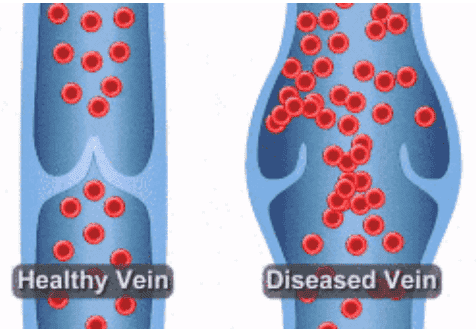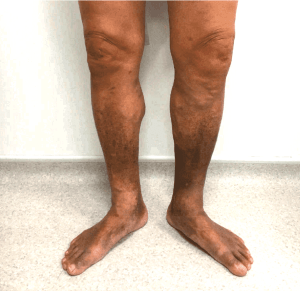Reticular Vein Removal
Reticular veins appear as short, jagged lines under the surface of the skin and are red or blue in color. Their occurrence can be attributed to improper valve closure within the veins. This inability to close often allows blood to flow backward, causing the vein to change color or become enlarged. Reticular veins often show up in branch-like patterns similar to spider veins but are more likely to cause discomfort. A reticular vein sometimes originate from larger varicose veins, but typically do not protrude in the same way.
Symptoms of Reticular Veins
In most cases, reticular veins are only a cosmetic concern and rarely lead to serious health risks. However, they have been known to cause itching, burning, and general discomfort in some cases. Even less often, reticular veins can be indicators of blood backup in deeper parts of the leg. These sorts of backups can lead to serious problems such as blood clotting and skin ulcers.
If your symptoms continue to worsen despite efforts to self-treat, you may want to see a doctor.


Treatments for Reticular Vein
There are many treatment options available that have proven successful in the removal of a reticular vein. Not every condition related to venous insufficiency requires treatment. You and your doctor should discuss your specific situation and the options that are best for you. Varicose vein removal treatments range from conservative, lifestyle-based approaches to more advanced outpatient treatment methods.
Superficial venous reflux disease treatment aims to reduce or stop the backward flow of blood. Superficial vein removal is a great way to treating the diseased vein, improving the overall blood flow and helping relieve symptoms. For some patients, compression stockings alone may improve blood flow. For other patients, closing or removing the diseased vein may be necessary to improve blood flow. Closing or removing the diseased vein directs blood to nearby healthy veins. Your doctor can help you decide which treatment option is best for you. Contact one of our doctors if you require varicose vein treatment in east Tennessee
Risk Factors of Reticular Veins
A number of factors increase a person’s chances of developing reticular veins. These include:
- Heredity
- Prolonged standing or sitting
- Obesity
- Hormonal changes
- Sun exposure
- Menopause
- Pregnancy
Reticular Vein Removal
Reticular veins appear as short, jagged lines under the surface of the skin and are red or blue in color. Their occurrence can be attributed to improper valve closure within the veins. This inability to close often allows blood to flow backward, causing the vein to change color or become enlarged. Reticular veins often show up in branch-like patterns similar to spider veins but are more likely to cause discomfort. A reticular vein sometimes originate from larger varicose veins, but typically do not protrude in the same way.
Symptoms of Reticular Veins
In most cases, reticular veins are only a cosmetic concern and rarely lead to serious health risks. However, they have been known to cause itching, burning, and general discomfort in some cases. Even less often, reticular veins can be indicators of blood backup in deeper parts of the leg. These sorts of backups can lead to serious problems such as blood clotting and skin ulcers.
If your symptoms continue to worsen despite efforts to self-treat, you may want to see a doctor.


Treatments for Reticular Vein
There are many treatment options available that have proven successful in the removal of a reticular vein. Not every condition related to venous insufficiency requires treatment. You and your doctor should discuss your specific situation and the options that are best for you. Varicose vein removal treatments range from conservative, lifestyle-based approaches to more advanced outpatient treatment methods.
Superficial venous reflux disease treatment aims to reduce or stop the backward flow of blood. Superficial vein removal is a great way to treating the diseased vein, improving the overall blood flow and helping relieve symptoms. For some patients, compression stockings alone may improve blood flow. For other patients, closing or removing the diseased vein may be necessary to improve blood flow. Closing or removing the diseased vein directs blood to nearby healthy veins. Your doctor can help you decide which treatment option is best for you. Contact one of our doctors if you require varicose vein treatment in east Tennessee
Risk Factors of Reticular Veins
A number of factors increase a person’s chances of developing reticular veins. These include:
- Heredity
- Prolonged standing or sitting
- Obesity
- Hormonal changes
- Sun exposure
- Menopause
- Pregnancy